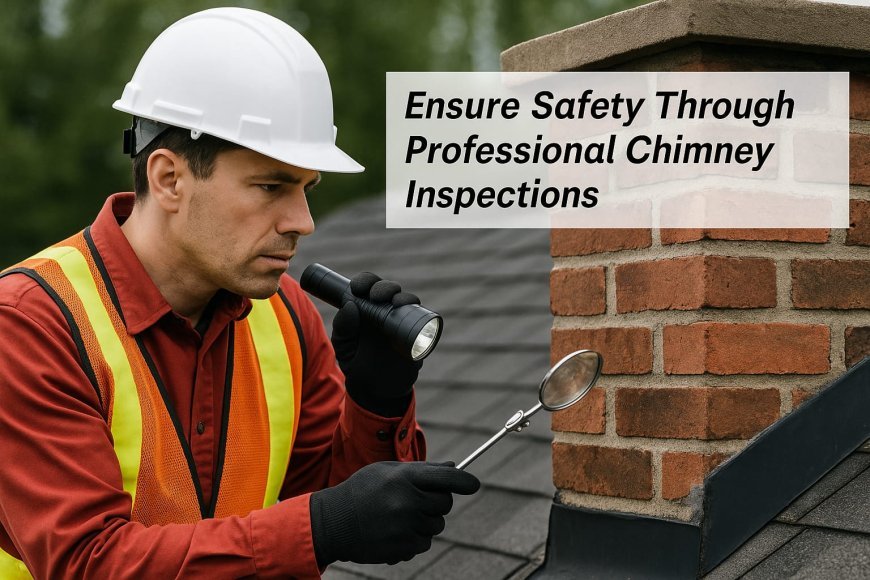How Chimney Inspection Spots Water Damage Early

When most people think about their fireplace, they imagine cozy nights by the fire, not the hidden problems that can be lurking above. Yet, the truth is, your chimney can quietly suffer from water-related issues long before you notice a single drop inside your home. That's where a chimney inspection comes in handy, acting as an early warning system for water damage you might otherwise miss. By the end of a thorough chimney inspection, you’ll often know more about your chimney’s health than you ever expected.
Chimney Inspection: The Secret to Catching Water Damage Before It Spreads
Think of your chimney as the silent guardian of your fireplace. It stands outside in the rain, snow, and sun, all year round. Over time, water can sneak in through tiny cracks or worn-out seals, quietly causing trouble inside the brickwork or flue. The signs of water damage are rarely obvious at first. In fact, most homeowners don’t spot anything until the problem has grown and repair costs have shot up.
Here’s where a regular chimney inspection becomes a game-changer. When an expert checks your chimney, they’re trained to notice subtle changes: a little bit of crumbling mortar, a damp spot that wasn’t there last season, or a faint musty smell. These clues are easy to miss for most of us, but to a seasoned eye, they’re bright red flags that water has found its way in.
What Inspectors Look For: The Tell-Tale Signs of Water Trouble
You might be surprised at how many ways water can make its presence known in a chimney. Here’s a quick look at some common things a chimney sweep or inspector checks for during a fireplace safety inspection:
| What They Check | What It Could Mean |
|---|---|
| Cracked or Missing Mortar | Water may be seeping in, weakening the structure |
| Efflorescence (White Staining) | Moisture has passed through the bricks, leaving mineral deposits |
| Rusted Firebox or Damper | Metal parts are exposed to moisture, causing corrosion |
| Damp Smells or Stains Inside | Active water leaks, possibly from damaged flashing or caps |
| Spalling Bricks (Flaking or Popping) | Freeze-thaw cycles are breaking apart wet bricks |
| Loose or Missing Chimney Cap | Rain can flow directly inside, soaking the flue and masonry |
Each of these symptoms tells a story. Sometimes, the fixes are simple, like sealing up a gap or replacing a cap. Other times, catching these issues early is the only way to avoid expensive repairs down the line. That’s why regular chimney maintenance is so important.
Why Early Detection Saves More Than Just Money
Spotting water damage early isn’t just about dodging the headache of ruined bricks or a rusty damper. Water in your chimney can create bigger problems than you’d think. For one, moisture is a breeding ground for mold and mildew, which can cause musty odors and even affect your indoor air quality. In some cases, water can trickle down and damage walls or ceilings close to the fireplace, leading to unsightly stains and the need for costly repairs.
Most importantly, a compromised chimney can actually become unsafe. If water weakens the structure, bricks can loosen or fall, and the flue liner may break down. That affects how well your fireplace vents smoke, which is critical for keeping your home safe from smoke and carbon monoxide. All of these issues can begin with the most innocent-looking water stain or a small crack—exactly the kind of thing a chimney inspection is designed to find.
The Chimney Inspection Checklist: What Happens During Your Appointment
If you’ve never had someone check your chimney, you might be curious about what actually happens. It’s not just a quick glance at your fireplace! During a typical chimney inspection and cleaning, the pro will look at both the inside and outside of your chimney. This includes checking the crown (the top), the flashing (where it meets the roof), the bricks and mortar, the flue liner, and all the metal parts.
They might use a flashlight, special mirrors, or even a small camera to spot hidden problems. The whole process usually takes less than an hour, but it can reveal a lot about how your chimney is doing. Afterward, you’ll get a report—sometimes with photos—so you can see exactly what was found and decide what to do next.
Keeping Your Chimney Dry: Simple Steps You Can Take
While a professional eye is key, there are also a few things you can do between inspections to keep water out of your chimney. First, take a look at your chimney cap. This small but mighty piece keeps rain, snow, and even critters out. If it’s missing or damaged, get it replaced sooner rather than later. Next, watch for any white stains or flaking bricks on the outside. These usually mean water has already started causing mischief.
Lastly, after a heavy storm, step into your fireplace room and check for any new damp smells or stains. If you spot something off, don’t wait—schedule a chimney inspection to catch problems before they grow. Remember, the sooner you spot water, the easier and cheaper it is to fix.
Conclusion: Don’t Let Water Sneak Up On You—Inspect Regularly
At the end of the day, keeping your chimney healthy is a lot like taking care of your car. You don’t wait for a breakdown before checking the oil, right? The same goes for your fireplace. By booking a yearly chimney inspection, you’re giving your home the best chance to stay safe and dry, no matter what the weather throws your way. Catching water damage early doesn’t just save you money—it helps protect your entire home for years to come.
Read More: Aurora Chimney Sweep
What's Your Reaction?





























































